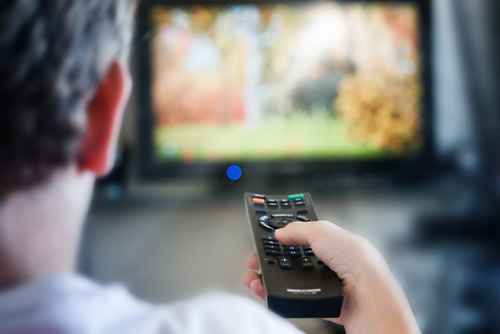Tech Notes
Did you know that your TV can talk to you? No, I am not talking about the characters in the shows and commercials. I am talking about powerful screen reader technology that allows a person who is blind to access and use all the onscreen programming and features available on today’s TV systems. Screen readers are built into nearly all of today’s Smart televisions, cable and satellite broadcast systems, as well as streaming systems like Apple TV, ChromeCast, and Roku.
I am old enough to remember when TVs only had “Power,” “Volume,” and “Channel” knobs, and when the onscreen images got fuzzy, you just smacked the box on the side, which pretty much took care of things. Fast forward 50 years, and TV systems now have extensive onscreen programming systems for accessing a wide range of advanced features, including program guides, video recording features, on-demand shows and movies, applications like Netflix and Hulu, web browsing, search, and other TV settings. All these advanced features are now accessible with the built-in screen readers. They allow a person who is blind or visually impaired, or a person with another print disability, to access the exact same advanced features as their non-disabled peers.
For example, here is a demonstration of the accessibility features on a Samsung TV: Samsung Television Accessibility Overview
AFB Consulting’s accessibility specialists and engineers were thrilled to work on creating and testing the accessibility features of many of today’s TV delivery systems, including VIZIO and Samsung TVs, and the Comcast Xfinity and AT&T U-verse systems. We applaud these companies for their work, and we also applaud the United States Federal Communications Commission (FCC). The FCC administers the 21st Century Communications and Video Accessibility Act, a law that requires user controls for TVs and other video programming devices to be accessible to people who are blind or visually impaired.
For more detailed information, visit these links to access the User Guides for some of these popular TV brands, or do a web search for the specific accessibility features of your TV.
There are also accessibility User Guides available for the streaming systems as well.
For you developers out there building software applications for Smart TVs and other streaming services, please be aware of the CVAA requirements, and know that with a little attention to accessibility, your apps will also work with these powerful accessibility features. The systems already speak, so you do not have to reinvent the wheel, and we at AFB provide insights to both consumers and developers to help in the creation of apps that will reach this huge and growing market of people with print disabilities.
You can explore our resources for digital inclusion by following this link: https://www.afb.org/consulting
